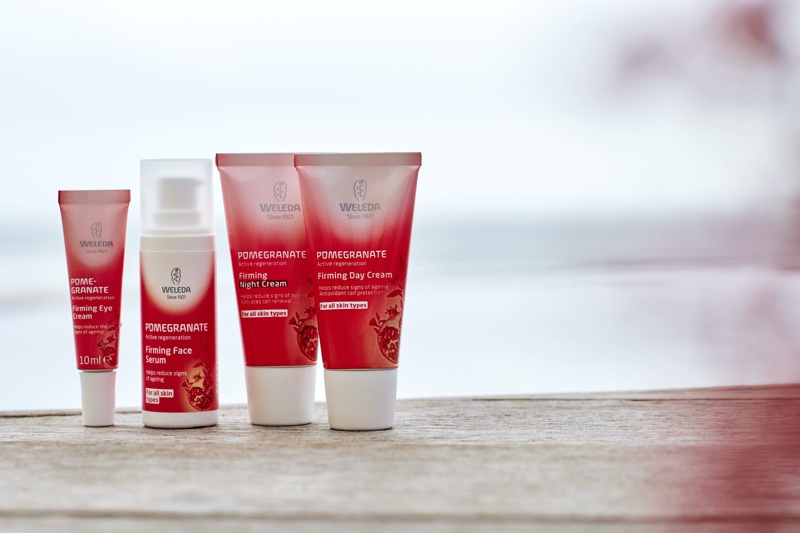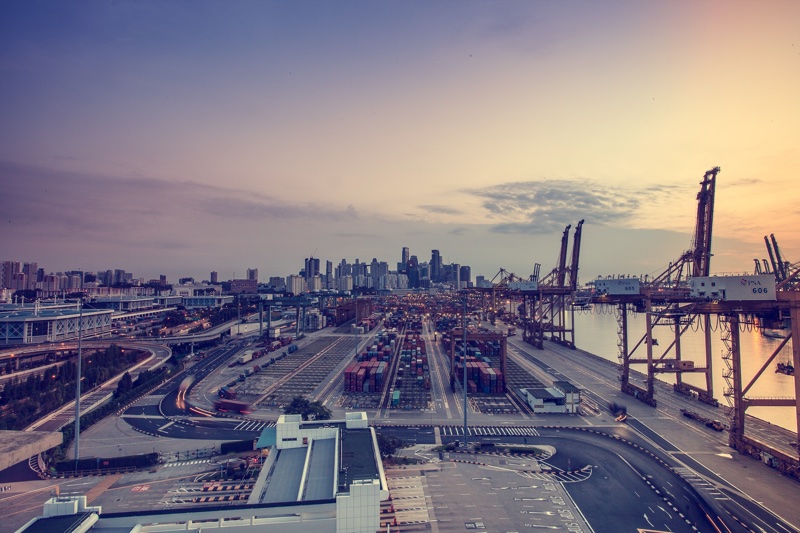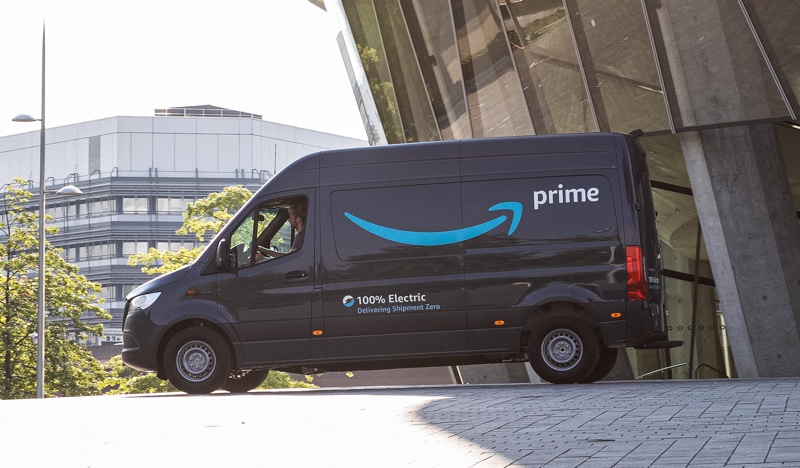On the face of it, it’s pretty straightforward to notice if a beauty brand is putting sustainability at the fore, and if it isn’t, they generally like to shout about it.
‘We only use palm oil that is responsibly-sourced’, one might say. ‘Our supply chain is completely transparent,’ others caterwaul. While some give airtime to the latest in sustainable technology or creative movements in packaging solutions, such as Bulldog’s glass razor made from recycled beer bottles.
More obvious tell-tale signs of a conscious beauty brand on-shelf would be a reduction in single-use plastic, refillable technology, a waterless product or packaging that is actually biodegradable.
But behind the marketing, there’s another supply chain cog in play that consumers – and potentially even brand owners – have little idea on how to ‘green up’. Freight.
In 2015, the International Transport Forum (ITF) noted that the movement of cargo around the world makes up more than 7% of the world’s CO2 emissions and, consequently, contributes to the heating up of the planet.
The OECD organisation also predicted that trade-related freight transport emissions would increase four-fold by 2050; contributing to 8,132 metric tonnes of carbon dioxide in the atmosphere by the same year – that’s the weight of 600 ship anchors.
“Cosmetic retailers or shippers, or even customers, need to start to think about what mode of transport is involved in getting their products from A to B,” Charles Haine, Technical Director, Environment Maritime Sector Lead at WSP tells Cosmetics Business.
“Companies want to be good corporate citizens now; everyone’s talking about greener and cleaner and electric provision so that air quality is better and that there is some cooperation between different parties in the supply chain.”
Freight for the future
At present, methods of moving goods around the world do not stretch much beyond how customers go on their annual summer holiday. For decades, companies were limited to ship, road and rail transport, or a quintessential English canal if they’re not in a hurry. But the last century has given freight flight with the invention of the aeroplane.
Despite its fast method of getting from A to B, air travel is a furious carbon burner. A journey from London to New York will emit around 0.67 tonnes of carbon dioxide per passenger, according to the UN’s civil aviation body the International Civil Aviation Organization.
As a result, maritime transport has been adopted by roughly 90% of companies globally – but even this age-old mode presents its problems.
Ships run on huge quantities of low-grade fossil fuels made from distilling oil, and have been described as the ‘dirtiest’ fuel money can buy, even though its CO2 output is down on air travel per tonne.

Seemingly, brands are stuck between a rock and a hard place, and this is something Jayn Sterling, the Managing Director of skin care brand Weleda, expresses to Cosmetics Business.
“The delivery of product is really tricky to get right,” she notes.
“If we put our products into glass, it’s good for the planet because it is highly recyclable, but they become really heavy to transport and emit more carbon.
“It is these carbon emissions which are some of the most difficult to control because, as yet, there isn’t an easy and global carbon neutral delivery mechanism of getting products to the consumer such as electric, solar-powered vehicles and ships to transport goods around the globe.”
So, while brands are burying their heads in fact-checking their carbon emissions output per product, what are logistics companies doing to ensure they are making headway in sustainable practices?
Making travel green
One company that should probably get some attention for its efforts is the world’s biggest retailer. An example of Amazon’s sustainable alternatives of freight include developments in drone technology to reduce its pollution output from road freight.
A less futuristic plan is its Shipment Zero commitment, which aims to make all its maritime freight net zero carbon, with shipments cut by 50% by 2030.
By 2021, the retailer will roll out 100,000 electric delivery vehicles to its fleet, with 1,800 set to hit Europe. Meanwhile, Amazon has also listed as a member of BSR’s Clean Cargo Working Group.
Made up of 85 companies, from cargo owners to carriers and retailers, the initiative was founded as a buyer-supplier forum on maritime sustainability, assessing cargo emissions, sustainable procurement and decarbonisation.

H&M Group, Marks & Spencer and Primark are also listed with the Clean Cargo Working Group.
This is one example of what Haine believes companies should be doing to reduce their emissions output.
“We’ve got to consolidate; the industries need to come together. Retailers need to come together with shipping companies and logistics companies to try some things out and do pilot studies on the better way to do things.”
But brands other than the world’s largest retailer might not have the resources to challenge their cargo suppliers with vigour. For those smaller companies, Haine recommends a more direct approach.
“You can do a bit of probing, stick your nose into people’s business and maybe that ground swell of challenging and asking difficult questions will add to the clamour of these logistics to decarbonise.”
He adds: “You can start to select logistics companies who are a bit more proactive, those that are using e-bikes, cargo bikes, foot logistics, drones, the latest thinking around delivery and combined deliveries to save transport miles.”
Change is afoot

It’s hoped that by 2050, a carbon neutral vessel will not just be a possibility, but a reality. The same cannot be said for air travel given no battery has the power to propel the weight of an aeroplane into the sky.
But maritime transport is making headway. According to Haine, a kite-powered mode of transport is in the making, allowing a cargo ship – under the right conditions – to be heaved across the waves by its very own air carrier.
In the meantime, alternative fuels are one of the best feasible methods of becoming more sustainable while the world patiently waits for better technology.
As Haine notes: “The industry is now looking at itself with some vigour around alternative fuels such as ammonia and green hydrogen, the perfect solution is using offshore wind or renewable wind to make green hydrogen, which has a much smaller impact on global warming.”
We ask the expert

Ray Hopkinson, Creative Partner, Hubbub
How can beauty companies better communicate their sustainable practices?
"Our recent research with the British Beauty Council found that there is significant demand amongst the public for sustainable beauty products and brands, yet confusion remains a barrier for many.
One in five (20%) people surveyed said not knowing how to check if products are environmentally friendly was a deterrent to more sustainable consumption.
The polling also revealed that, of those surveyed, 90% want clearer information on how to recycle products when finished, 88% want information on how to use products in a more environmentally friendly way and 86% want information about ingredient supply chains.
Here are a few ways to communicate what you’re doing and build trust with your audience:
- Speak everyday language: It can be tempting to use environmental jargon but this is widely misunderstood by the mainstream public and makes it difficult for consumers to make choices. Communicate in a clear, accessible way and don’t overcomplicate things.
- Be transparent: Engaging consumers with more transparent communications builds trust that is vital for long-term success. No one expects you to be doing everything perfectly but be honest about your success and your room for improvement.
- Evidence your claims: There is a lot of greenwash out there which consumers have caught on to and many are going a step further calling brands out for this behaviour. Share the facts and present your sustainability achievements in accessible, relatable and creative ways.
